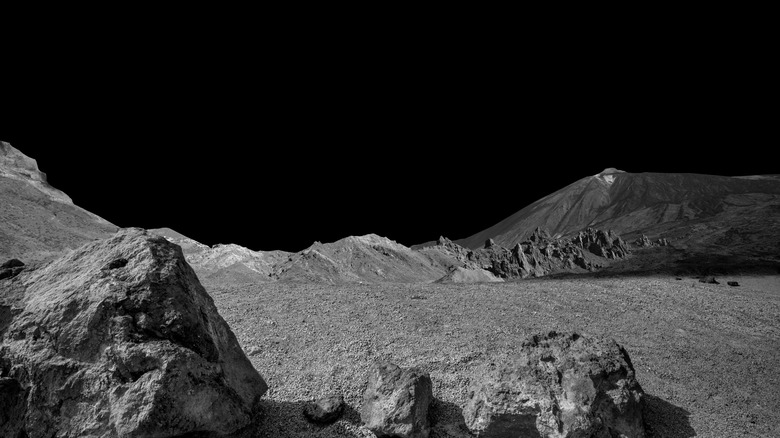Scientists May Have Found A Way To Turn Moon Dust Into Rocket Fuel And Oxygen
While it might seem logical to think we can bring all the resources we need to build a moon base (like the one South Korea plans to put together by 2045) and thrive on the lunar surface from down here on Earth, researchers estimate it would cost roughly $83,000 per gallon to transport water from Earth to the moon. But what if we could generate water and other much-needed resources directly from the resources the moon offers?
That's the idea behind a new study from Chinese scientists (published in Joule) that claims to have found a way to create water using moon dust. For long-term survival to be feasible, we need to find a smarter, more efficient way to generate water. And if moon dust can actually have water extracted from it, then we could have access to a proverbial never-ending well of water for astronauts to rely upon.
"We never fully imagined the 'magic' that the lunar soil possessed," Lu Wang, a research with the Chinese University of Hong Kong, Shenzen, said in a statement. "The biggest surprise for us was the tangible success of this integrated approach. The one-step integration of lunar H2O extraction and photothermal CO2 catalysis could enhance energy utilization efficiency and decrease the cost and complexity of infrastructure development."
Turning dust into water
The entire idea, according to the study and statements from the researchers, is to harness the water found in moon dust naturally. We know that water exists in the dust because of soil samples taken by the Chang'E-5 mission. While we've looked at other ways to extract water from the lunar soil, these have all previously relied on multiple energy-intensive steps.
But, with this new technology, the researchers claim they could not only harness the water in the moon dust, but they could also generate carbon monoxide and hydrogen gas, which could be used as fuel. They believe they could possibly even generate oxygen, which could be used to keep astronauts breathing on the moon. The researchers say they tested the process with multiple samples gathered by the Chang'E mission, as well as using simulated lunar dust samples.
Despite the success they've seen in the lab, the researchers do note that the harsh environment on the moon doesn't necessarily mean that the technology will succeed there, at least not as is. More research and testing is needed to ensure the system is actually viable as a water generation system. But at least we have taken a much-needed first step toward finding a solution that could make all of our moon colony plans (not least of all the lunar homes NASA plans to build by 2040) not only achievable, but easier to pull off.

